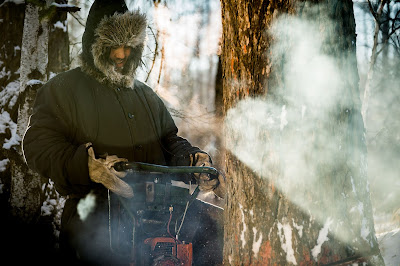The 23:e Far East Film Festival, Udine Italy
By Moira Sullivan
The Far East Film Festival is now in its 23 year (Feb 11 - 19) and for 2021 offers a physical festival and online festival with European, Italian and World streaming titles. Last year the festival was fully online due to the pandemic and this year there are five screens accommodating 400 spectators. The Far East festival is brilliantly organized by the Center for Cinematographic Expression in Udine Italy headed by festival President Sabrina Baracetti with a crew of consultants located in Asian countries who recommend the best films for the current year. The festival features press conferences, daily meetings with directors and film experts in Asian cinema and panel discussions about new trends in Asian Cinema from Japan, Mainland China, Hong Kong, Macao, Malaysia, Taiwan, South Korea, the Philippines, Indonesia, Myanmar and Thailand. The festival screens new popular films from Asia and directors attend or are available in video conferencing making Udine the next stop after the films release in their countries. There are always retrospectives of important Asian directors and this year actor/director Eddie Garcia from the Philippines is profiled. Movie Magazine International has covered this festival off and on for the past 15 years.These are some of the outstanding films this year. Cao Jinling’s Anima - Mother Nature Rules!, with the original Mongolian title, Mo Er Dao Ga, is set in the 1980s in the Moerdaoga National Forest Park, in Inner Mongolia, China’s oldest primary forest. The film opens on a lumberjack camp where Linzi (Chuan-jun Wang) and his older brother Tutu (Si Li Geng) work on a crew. They are part of the Ewenki tribe that traditionally raise reindeer. Director Jinling grew up knowing members of this tribe. As times have changed Linzi and Tutu become tree cutters in an area that is exploited by some (smugglers) and against the law. Some of the trees should not be cut down which is the central conflict in the film. Jinling explains that she has created this story about a deep ecological issue through a personal story. The two brothers vie for an independent widow (Chun) played by Xiqi who Linzi met when he accidently gets caught in trap she has set to hunt for food. Chu is strong and winds up saving Linzi a couple of times.
This beautiful film is photographed by Mark Lee Ping-Bing. The musical score by Lim Giong includes Ewenki folksongs and in the credits is a song played on a Mongolian Horse headed fiddle (with lyrics by Cao Jinling).
She holds a doctorate from the Central Academy of Drama in Beijing and studied filmmaking at USC School of Cinematic Arts. Cao Jinling has made several films and her latest has showcased at several festivals including Udine.
One of the first films in the Udine schedule was Limbo from Hong Kong by director Soi CHEANG that premiered at this year’s Berlinale. It has a traditional plot with a good cop bad cop and a serial murderer. But it detours from this, first of all because it is shot in black and white and that does not just mean two colors, for the film is luminescent with charcoal , grays, metallic color and bright white. Cheang said at the press conference that he debated about using black and white cinematography but decided on it and was clear about what he wanted to show artistically. This includes in the beginning of the film Buddha statues which are actually located in the Hong Kong slums that watch over everyone, plenty of garbage, and mannequin parts of women. The serial murderer pushing a shopping cart is played by Hiroyuki Ikeuchi (who was General Sanpo from Wilson Yip’s Ip Man) and a woman who lives in the streets Wong To (Cya Liu. She turns out to outdo them all in her endurance and tenacity.
This is the first week of the festival and Movie Magazine will report on more of the films in the next couple of weeks.
© 2021 - Moira Sullivan - Air Date: 06/30/2021
Movie Magazine International
Movie Magazine International


Comments
Post a Comment